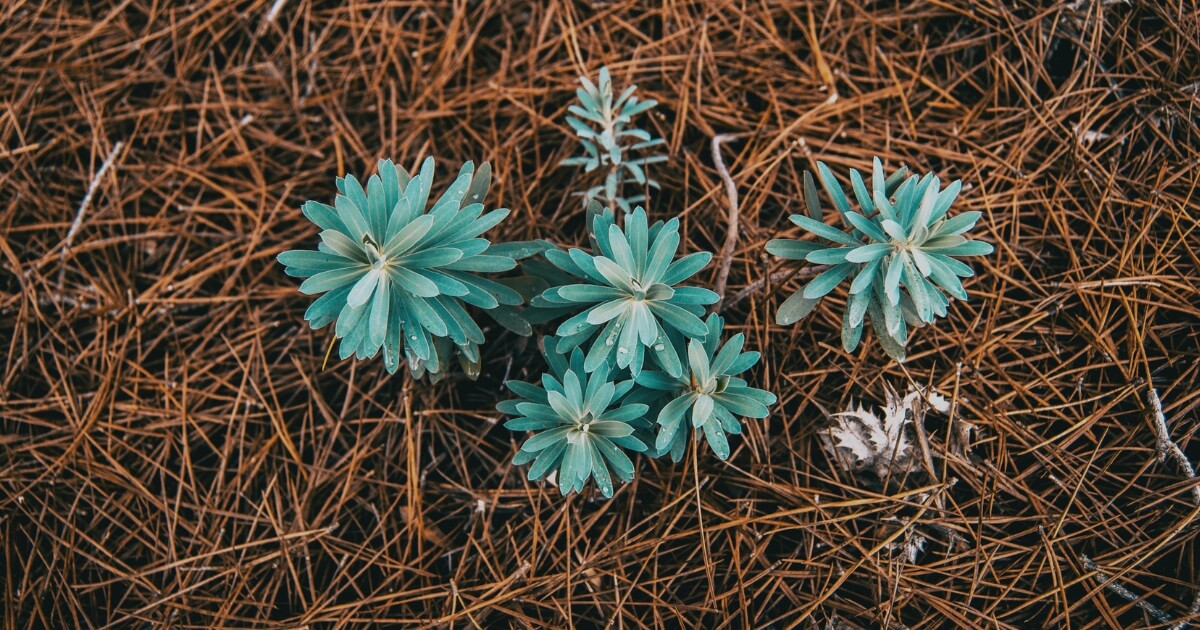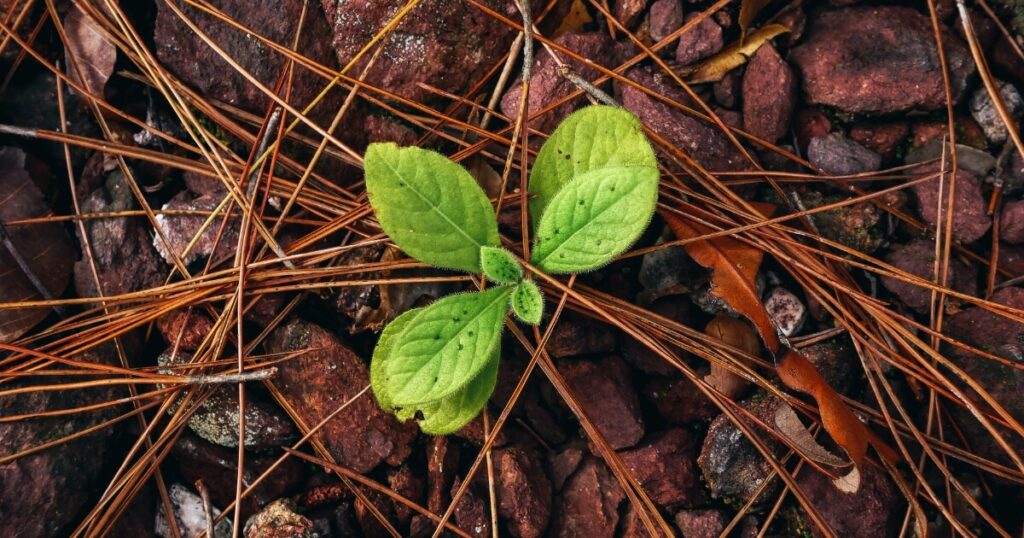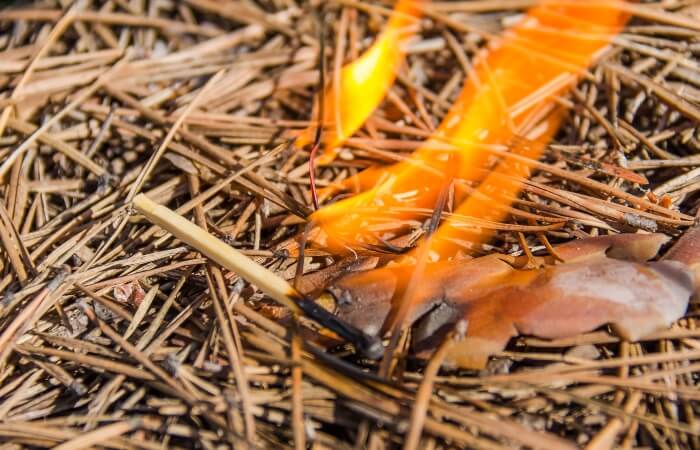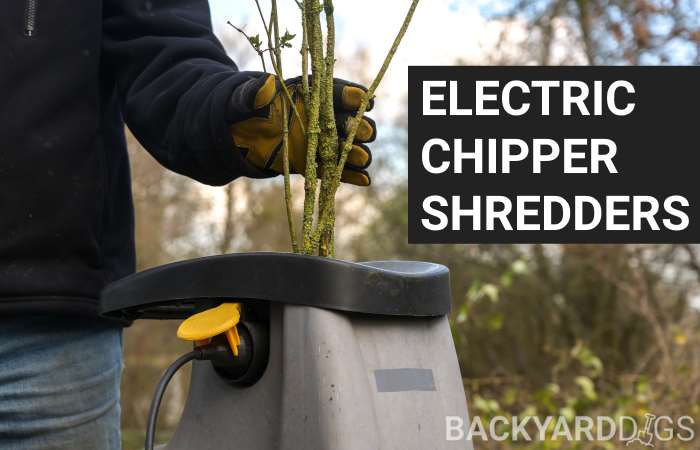Pine needles make good mulch and are often a better choice than wood chips or other options.
Pine needles are abundant and often free, so put them to good use to improve the look and health of all your landscaping plants and beds!

Can Pine Needles Be Used As Mulch?
Yes, dry pine needles, also called pine straw, make excellent mulch for many reasons, and it’s a myth they are too acidic for safe use in the garden.
First, the long strands of the needles interlock as the mulch settles over bare ground. This weaving of the needles creates a sturdy structure that prevents the pine straw from blowing away in strong winds or running out of the planter during rains or flooding.
Pine needles are organic, so you can allow them to break down into your garden soil without the worry of chemicals leaching out as you would with a rubber mulch product.

Pine needles have a tough, waxy outer coating that takes longer to decompose, so you won’t need to replace or refresh your planter beds as often as a wood or coffee hull mulch.
Another reason pine straw is good to use as mulch is that the needles leave open gaps that provide space for air and water to penetrate to ground level.
The airy texture allows the soil to stay shaded, yet plants and beneficial soil microbes get the moisture and oxygen flow they require to thrive.
Pine Needle Mulch Pros And Cons
Pine needles have many benefits, but there are some concerns when using them as mulch in your yard.
PROS:
- Low cost or free in many regions and all-natural
- Lightweight and easy to spread
- Needles lock together to prevent movement
- Won’t matt down to prevent water penetration or airflow
- Leaves organic matter and nutrients in the soil as it breaks down
- Needles retain their structure, so the mulch lasts longer
- Pine scent and needle texture deters many types of animals
- Traps air to provide better soil insulation during cold weather
- Looks attractive in garden beds when spread properly
- Does an excellent job reducing weeds
- No need for removal – refresh the top as the needles decompose underneath
CONS:
- May be pricier than other mulches depending on location
- Pine straw contains fewer nutrients
- Many insects love the protection the straw provides
- Short-needle pine straw isn’t as beneficial for mulch as long-needle
- May be a fire hazard in dry climates
What Plants Do Not Like Pine Needles
Pine needles in large quantities may slightly alter the soil’s pH level to be more acidic, which some plants do not like, such as:
- Caryopteris (Bluebeard)
- Forsythia
- Clematis
- Crocus
- Barberry
- Boston Ivy
- Lilac
- Buddleia (Mini butterfly bush
- Barberry
- Lilac
The reality is that fallen pine needles impact on soil acidity is almost negligible on plant growth or health.

Since most plants prefer to grow in slightly acidic soil, any possible lower pH pine needles cause will not be harmful and, in some cases, actually help balance out soil with a high pH.
There are no conclusive studies that show plants have an issue with pine straw near their growing location. On the contrary, certain plants love pine straw mulch, like azaleas, blueberries, rhododendrons, gardenias, zinnias, and marigolds.
Using Pine Needles As Mulch
Using pine needles as mulch does take some practice to master the technique so your garden beds look neat and the depth is sufficient to deter weeds.
What is great about pine needle mulch versus wood chip mulch is that it’s superior for covering hills or inclines because it forms an interlocking mat and holds firm.
Here are the steps to get the task done:
Step 1. Spread Your Pine Straw
You’ll want to start mulching an area by spreading out the pine straw over the ground you wish to cover, staying a few inches away from the stems or trunks of plants.
- If the pine needles are already loose from raking them up from another portion of your yard or a neighbor’s property, you can grab handfuls or use a garden fork to spread the needles in an even layer.
- If you purchase pine straw bales, you’ll need to break them open and fluff up the needles so they are easier to spread.
The best way to mulch with pine needles is to add a layer about an inch or so deep over a section, then return with another layer or two.
A final depth of three to four inches is optimal for soil erosion protection and weed control.
Step 2. Clean Up The Edges
Once you have your mulch in place, go back and clear away any needles touching the stems or trunks of your plants.
A circle a foot wide from the trunk should suffice for trees, while for plants, a few inches is safe.
You don’t want to suffocate plant foliage or root systems or encourage mold or fungi to grow from trapped moisture within the mulch.
After you deal with clearing an area around the plants, rake around the outer edge to push loose needles toward the bed.
TIP: If you roll the needles around the perimeter by lifting and tucking the needles under, it will form a nice edge that will hold the straw in position while the rest of the mulch settles.
Step 3. Make Final Adjustments
Once you have your mulch in place, be ready for some needles blowing or adjusting until the bed settles, which may take several weeks.
Spraying the surface of the mulch will help it settle and lock into place.
Expect to add another layer of needles after a month or so, especially if you see any signs of weeds poking through.
Since pine straw mulch is so fluffy when first spread out, it will lose some air gaps and settle, losing an inch or two of height.
Step 4. Maintain Your Pine Straw Mulch
Once the pine needle mulch settles and you achieve the depth that works best for your plants, you’ll only need to top it off every year or so to offset any decomposition of the needles closest to the ground.
There is no need to rake away and replace the whole layer of pine straw, which reduces labor and the decaying needles add critical nitrogen to the soil.
Please watch that you don’t let your mulch get too deep. Once you make a layer of pine straw over 5-6 inches deep, it can become too dense over time for proper water distribution and become detrimental to your plants.
If you need to mulch your property, give pine needles a try. You may become a convert once you see how great it performs!










